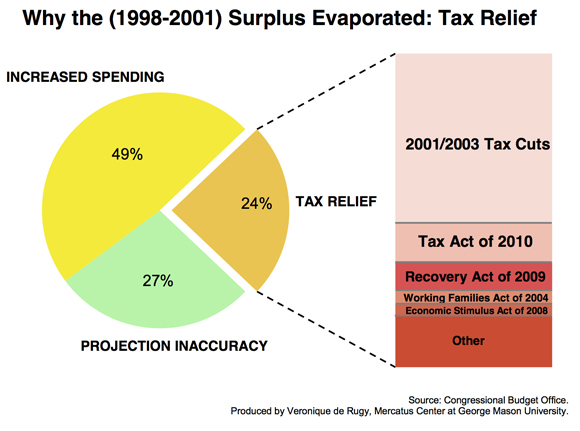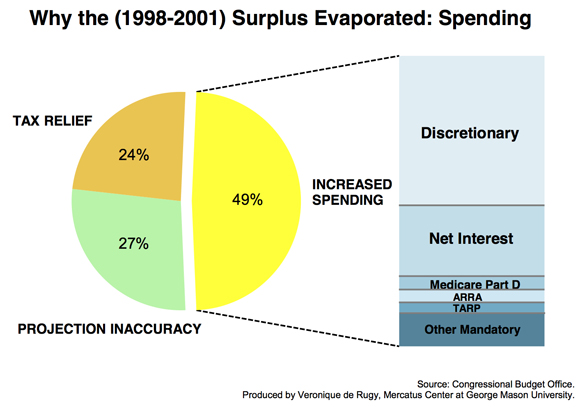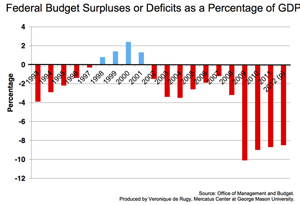- | Government Spending Government Spending
- | Data Visualizations Data Visualizations
- |
How Federal Surpluses Became Deficits
In the face of ballooning federal budget deficits, people have been wondering how the Clinton surpluses evaporated. Indeed, between 1998 and 2001 and for the first time in decades, the U.S. budget was balanced. Using Congressional Budget Office data, these two charts—modified from the ones made by Charles Blahous in his e21 piece “How Did Federal Surpluses Become Huge Deficits?”—provide some answers to this question.

In the face of ballooning federal budget deficits, people have been wondering how the Clinton surpluses evaporated. Indeed, between 1998 and 2001 and for the first time in decades, the U.S. budget was balanced. Using Congressional Budget Office data, these two charts—modified from the ones made by Charles Blahous in his e21 piece “How Did Federal Surpluses Become Huge Deficits?”—provide some answers to this question.
According to the CBO, three areas have influenced the swing from projected surpluses to actual deficits over the 2002–2011 period: (1) increased spending, (2) a shortfall in tax revenue, and (3) projection inaccuracies.
As we can see on these charts, over the 10-year period, about three-fourths (73 percent) of the $12.7 trillion growth in federal debt was spending and tax legislation, the rest being the product of projection inaccuracies—such as expecting higher growth, increased revenue, or lower spending.
The shortfall in tax revenue—caused by legislation such as 2001/2003 tax cuts, the tax relief implemented as part of the stimulus bill in 2009, and the Tax Act of 2010—accounts for about a quarter (24 percent) of the shift from surplus to deficits. However, spending increases over the 10-year period is the main factor contributing to the current deficits. As you can see, almost half (49 percent) of the change comes from increase in spending. The major areas of increased spending were the defense budget, Medicare, and the stimulus bill of 2009.
For more information, check out Charles Blahous’s e21 piece and my piece on the perils of economic and budget forecasting.
Supplemental Charts (click to enlarge)





